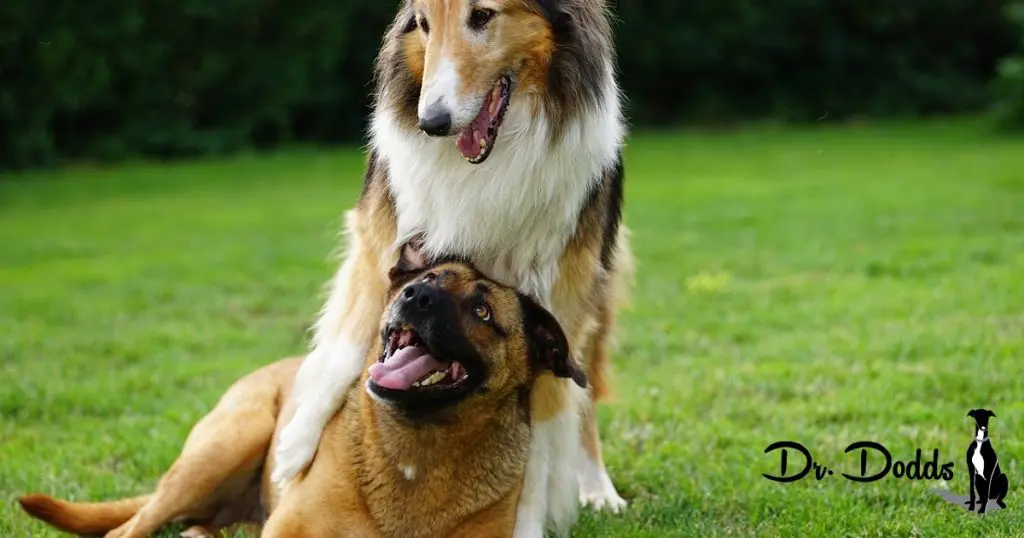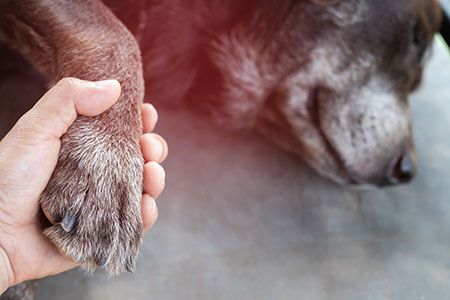When Wiles told other people about her situation, she says, she was often met with bafflement and scorn rather than sympathy, and questions about why she didn’t just put Mia down. But Cushing, while chronic, is manageable. “I have a problem deciding to kill my dog just because of health issues. I don’t understand the mind-set of, ‘She’s got a health problem, we’re going to put her down,’” Wiles says. “If the dog was suffering, it would be one thing, but she is still interested in life.”
There’s no question, though, that caring for her has made Wiles’s own life more difficult — emotionally, socially, financially. It’s well known that people caring for ill relatives can suffer from caregiver burden, negatively impacting the health and well-being of the caregiver, but the toll of taking care of a sick pet is often minimized or overlooked. According to a new study, that’s a mistake.
Spitznagel, who had previously worked with caregivers of relatives with dementia, says she got the idea for the study while caring for her dog Allo, who had recently been diagnosed with bladder cancer. “It was a daily challenge trying to fix the problems that sprang up.
And that was kind of when I realized the similarity,” she says. “When we see a burdened caregiver, oftentimes the burden is kind of the constant problem solving, because new problems are always emerging when you are caring for someone who is sick.”
Compared to participants with healthy pets, study subjects caring for chronic or terminally ill animals scored higher on scales of depression, anxiety and lower on well-being, and a psychometric test called the Zarit Burden Interview used to measure burden in human caregivers (the study authors adapted the test by replacing the word “relative” with “pet”). In itself, the finding that people with sick pets feel more of a burden isn’t surprising — but the intensity of that burden was. “It’s meeting this threshold for what we would consider to be concerning if someone were in a human caregiving relationship,” Spitznagel says.
In humans, a score of 20 or higher on the Zarit — which contains items related to feeling strained about your pet, having your social life suffer, and financial stress — indicates “significant burden.” Caregivers of sick pets scored 25.42 on average, compared to 13.96 for owners of healthy pets.
A few caveats: Participants in the current study were almost exclusively educated, wealthy, white women, with an average age of 48. The skewed sampling is likely a limitation — but “at the same time, this might be exactly who the population is,” Spitznagel says. After all, caregiving in humans typically falls to women, and veterinary care, which typically comes out of pocket, is unaffordable to many. Beyond replicating the results in a more diverse group, Spitznahel adds, the next step in her research would be to investigate the “ramifications of burden and the impact on the pet.”
Pet owners go into more detail, describing serious negative impacts to their finances, mental and physical health, social and employment status, and relationships. Wiles, who works two side jobs to help pay for vet treatments, says she has become physically ill from the stress of caring for Mia, compounded by the fact that she now helps her mother care for her grandmother as well.
Emotionally, caring for Mia and caring for her grandmother didn’t feel very different, Wiles says. “The biggest difference is with my grandma there was someone to relieve me,” Wiles said. “Other family members would come and help, but when it’s a dog people aren’t willing to do that.”
“I felt really trapped, ” said Petra Lee, 40, who at one point last year was caring for blind dog, a dog with allergies, an epileptic dog, and a cat with cancer. “I’ve lost a lot of sleep. There was a point where I was really stressed out just having to function with all this and I was having to take a lot of time off of work. I had a hard time making food for myself.” Lee’s caregiving also caused fights with her ex-girlfriend, she says, although overall her ex was very helpful.
But “the biggest thing for me,” Lee says, “is financial.” She felt a lot of guilt last year when she had to balance caring for her cat against her other animals, and also encountered a lot of people who question her choices. “I think I have a lot of privilege, I can afford it,” Lee explains. “I don’t make a lot of money, but I have pretty good salary. And I don’t have children and my dogs are my life.”
“We have our good days, our bad days, and our horrible days,” says Ana Sakuta, 37, whose dog, Roxy, became paralyzed a few years ago. Surgery fixed the problem — Roxy recovered and things went back to normal for a while. But soon, new issues emerged: Roxy stopped eating, became lethargic, and wouldn’t take her medicine.
At that point, Sakuta, who has been the main caregiver for the dogs, brought up euthanasia to her husband, which caused a fight — an added stressor she didn’t need. “It’s really rough. I’m crying, calling the vet all the time,” Sakuta says. “You try to talk to somebody about it and they don’t understand.” Sakuta has asked others in her family for help looking after Roxy, she says, but people tell her they don’t feel comfortable watching the dog due to the amount of work involved.
Although Spitznagel’s is the first study to formally document pet caregiver burden, veterinary social workers have long been aware of the issue. Susan Cohen, a support group facilitator at the ASPCA, estimates she has counseled thousands of pet owners over the years.
The most common issues she hears are “constant vigilance, isolation, and guilt,” she says, and the never-ending problem solving also take a toll: “They’re trying to decide all the time whether the pet is getting worse or getting better, and they often don’t have anyone to talk to about it,” she explains.
“I am so pleased that that study was done,” Cohen adds, noting that she’s tried to get vets to recognize caregiver burden and set up systems to address it. A few large veterinary practices have counselors on staff and offer support groups, but the practice isn’t widespread, and she often gets pushback about the lack of research.
In the meantime, Cohen works with pet owners to ease the decision-making load as much as possible, helping them establish boundaries and a treatment plan early on. Most people say that they will care for their pet so long as they have the means. “I want to figure out what their limits are,” Cohen says, which often involves naming a dollar amount or cap. Whether it’s money or quality of life, it’s helpful for pet owners to be able to answer one simple, and painful, question: “What are you trading it for?”












